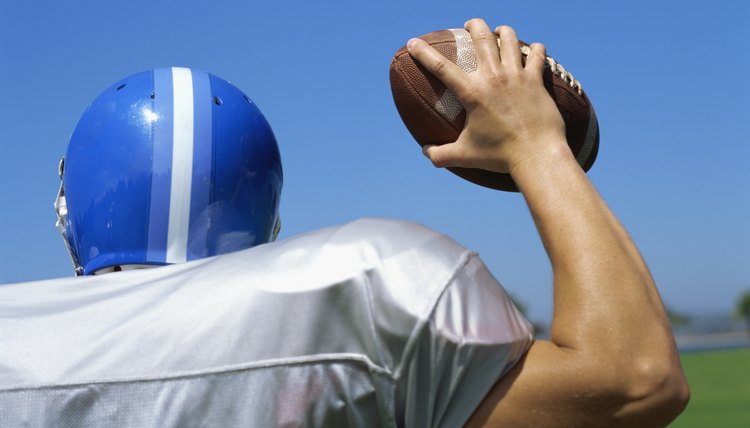The Components of Fitness Used in Football

Football players participate in rigorous drills to condition themselves for games. Professional football players must maintain extreme fitness to perform well for their teams. Scholastic and amateur-level football players also rely on fitness components during a typical game. If you are a beginner, ask a sports fitness expert to help you develop the skills, strength, speed and endurance necessary for football.
Strength
At the highest levels of the sport, players weighing 300 lbs. are common. Blocking or tackling players of this size requires extraordinary strength. Football training builds strength through weight training and conditioning drills. For example, a coach might place heavy tackle dummies on the practice field. Players must rush at the dummies and push them as hard as possible. Activities such as this build strength and power.
Speed and Agility
Even the largest players must have speed. Defensive players must run fast enough to keep up with offensive players, who often run with the ball for a touchdown or sprint downfield to catch a pass. Also, football plays require players to perform complex runs, darting between teammates and opponents. To do this, a football player must be fast enough to outrun opponents and agile enough to avoid collisions.
Endurance
All the strength, speed and agility in the world won't mean much if you can't maintain a high level of performance throughout a game. Rigorous practices and constant conditioning drills develop the endurance of football players. Cardiovascular exercises, such as jogging and sprinting drills, help players develop high levels of endurance.
Special Skills
Depending on the roles they play, football players also must be experts at a particular aspect of the game. For example, the quarterback must be able to throw a ball quickly and accurately under pressure. A wide receiver, typically one of the fastest players on a team, must sprint long distances to catch passes. While running, a wide receiver darts and feints to outmaneuver defensive players who try to block the pass. Fulfilling these and other specialized roles requires the development of specific fitness skills.
References
Writer Bio
Stan Mack is a business writer specializing in finance, business ethics and human resources. His work has appeared in the online editions of the "Houston Chronicle" and "USA Today," among other outlets. Mack studied philosophy and economics at the University of Memphis.
